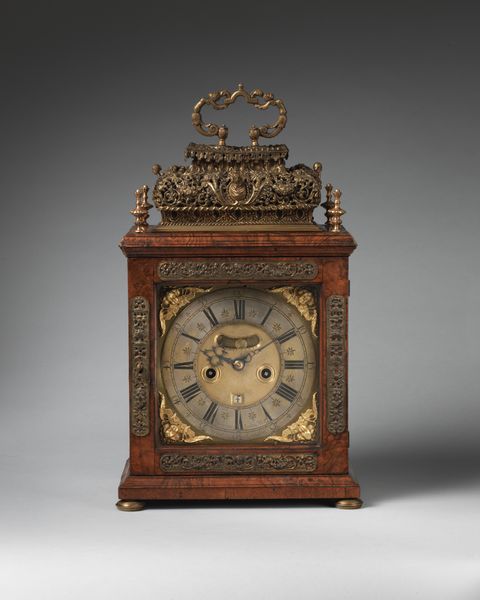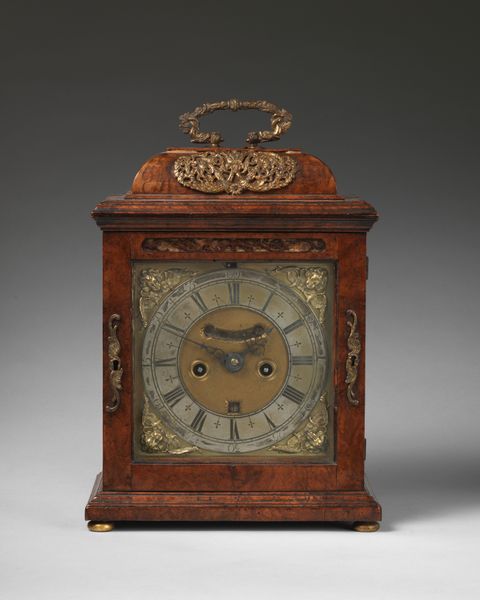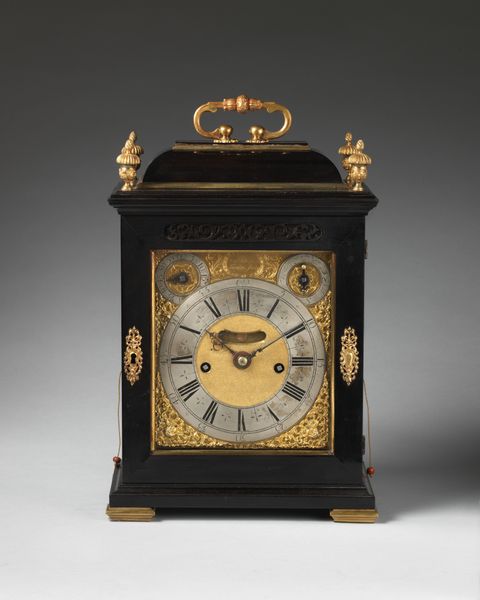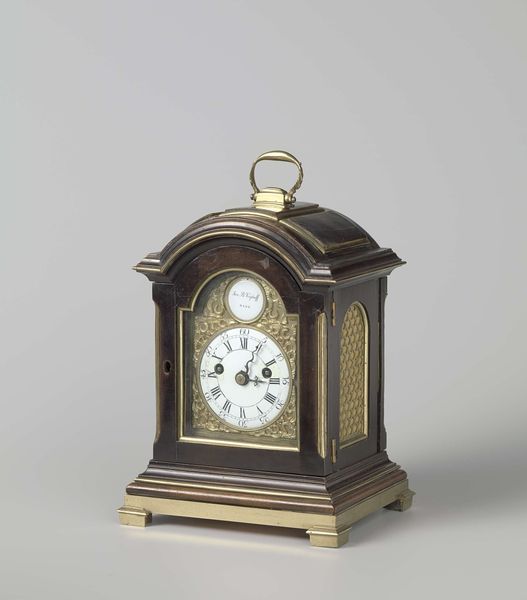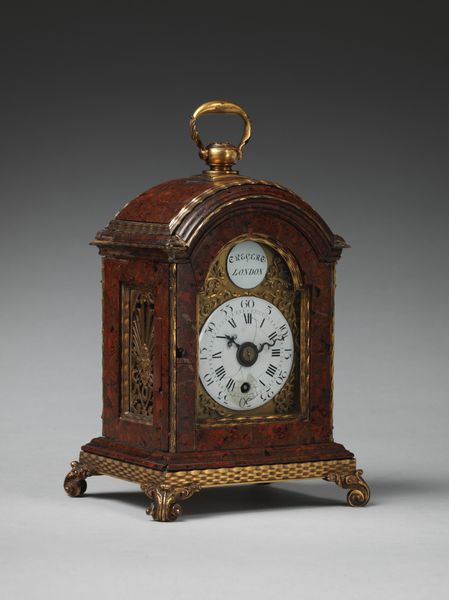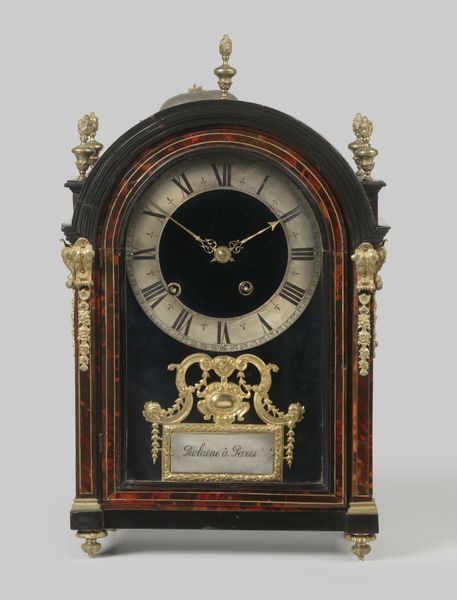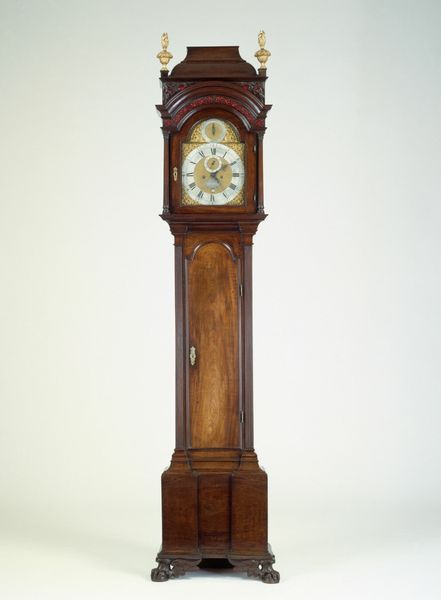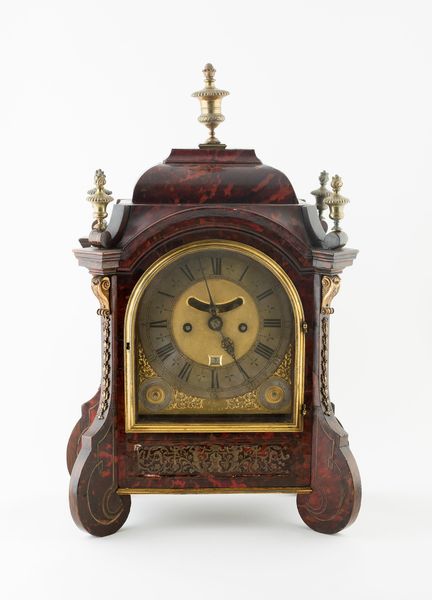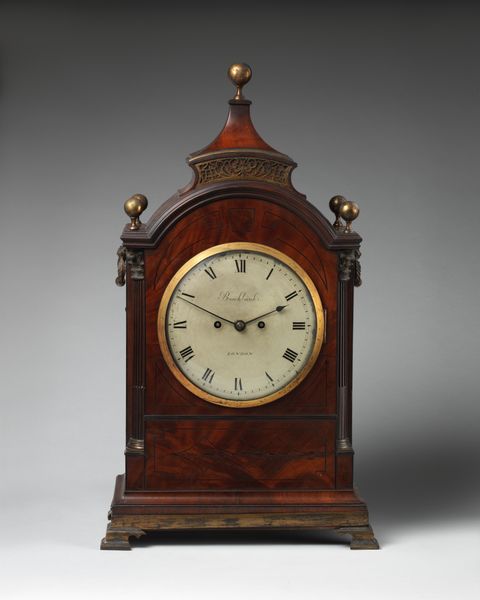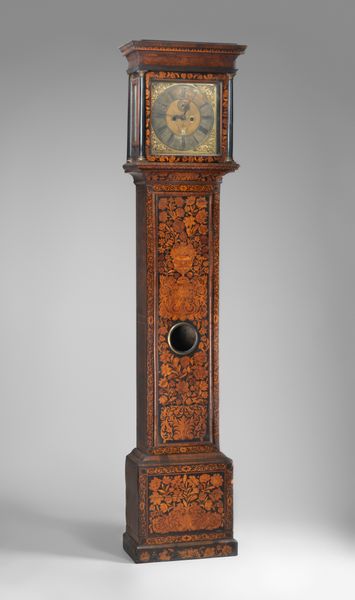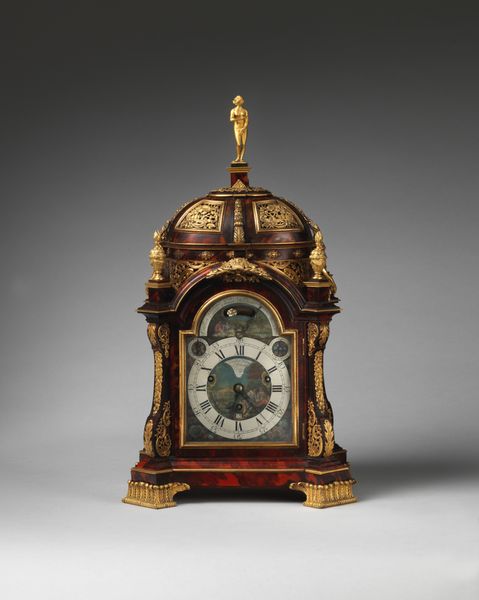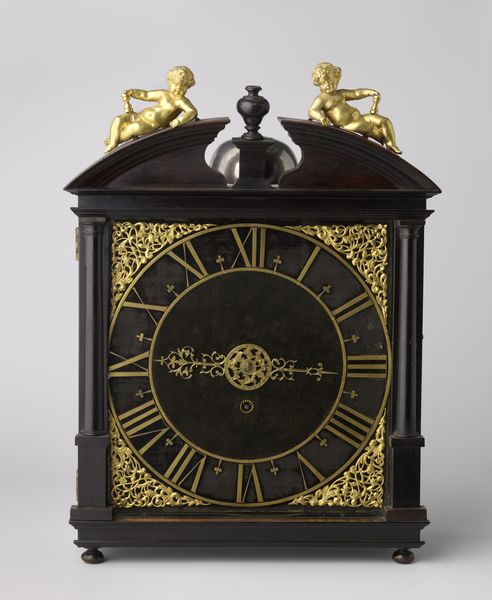
carving, sculpture, wood
#
carving
#
baroque
#
sculpture
#
sculpture
#
wood
#
decorative-art
Dimensions: Overall: 10 × 5 × 3 3/4 in. (25.4 × 12.7 × 9.5 cm)
Copyright: Public Domain
Curator: At the Metropolitan Museum of Art, we have an exquisite example of an English bracket clock dating to 1755. Made from wood, it's a striking piece of decorative art that encapsulates the Baroque style. Editor: My immediate impression is that it looks like a miniature Gothic cathedral dedicated to timekeeping! The intricate carvings lend it a gravity that feels both archaic and slightly whimsical. Curator: Precisely. These bracket clocks became symbols of wealth and status in the homes of the affluent. Placing a timepiece like this on a table or shelf allowed individuals to manage their day more strictly, marking a shift towards regimented routines, driven by societal factors of trade, manufacturing, and new work ethics. Editor: That's fascinating. Beyond the time-telling function, there is a density of imagery that feels almost ritualistic. The repetitive Gothic arches suggest more than mere decoration, perhaps reflecting anxieties about order or control during an era of intense change. Also, do you see how dark the wood is, how it absorbs the light? Time here is weighty, something to be measured, and potentially feared. Curator: Indeed. The darkness and weight were very much by design. Such items often functioned as focal points in a room, indicating that the household was cultured and up-to-date. The meticulous craftsmanship speaks of an owner obsessed with time, precision, and quality, thereby elevating their social standing. Editor: Thinking of how the light might catch those carvings throughout the day, imagine the shadow play! This wasn’t just about telling time. It’s about time as performance, time as a demonstration of power. Curator: I concur. And while we admire this marvelous example of decorative arts, let's reflect on how material possessions like these shaped, and continue to shape, our perceptions of time, value, and status. Editor: Absolutely. The symbolic richness layered onto such practical objects offers endless insight into how we build cultural meaning and encode psychological attitudes.
Comments
No comments
Be the first to comment and join the conversation on the ultimate creative platform.
